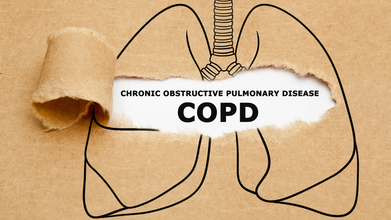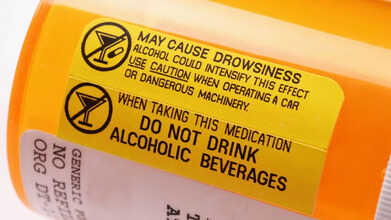- Health Conditions A-Z
- Health & Wellness
- Nutrition
- Fitness
- Health News
- Ayurveda
- Videos
- Medicine A-Z
- Parenting
What Are The Dutch Guidelines Of Active Euthanasia And The Countries That Allow It

Credits: Canva
A new bill has been proposed in Britain and lawmakers are expected to vote Friday. This bill aims to legalize assisted dying, which was introduced on Wednesday. This is the first time in almost a decade that the House of Commons will debate. The debate will discuss if doctors should be allowed to help end people's lives.
History of the Bill
Labour politician Kim Leadbeater in the House of Commons read out the bill that grants terminally ill people in England and Wales a way to allow physicians to help them die.
The bill is called the Terminally Ill Adults (End of Life) Bill. This bill has not been debated since 2015.
Is it the same as Euthanasia?
Many countries allow euthanasia, which is referred to as mercy killing. However, the practice of the same varies legally.
Euthanasia is an act of ending a patient's life to limit the patient's suffering. Here, a patient would be a terminally ill person or someone who is experiencing great pain or suffering.
The word euthanasia comes from the Greek words "ey" good and "Thanatos" death. The idea behind euthanasia comes from the idea of a dignified death that condemns someone to a slow, painful, or undignified death.
What does the UK bill propose?
The bill proposes that only those who are 18 years old and older in England and Wales and those who are expected to die within six months can request assisted dying. The bill states that the person requesting for this must have the mental capacity to make a choice about the end of their life and will be required to make two separate declarations about their wish to die. This two-step declaration along with "robust safeguards" with "three layers of scrutiny", with two independent doctors and High Court Judge to allow the signed off decision is to protect anyone from being pressured or coerced into ending their life.
If anyone is found to dishonestly get someone to take their life through this decision, that person will face up to 14 years in prison.
Assisted suicide is banned in England, Wales and Northern Ireland and anyone who helps a person end their life can be prosecuted and face up to 14 years in prison.
ALSO READ: UK Presents Bill To Allow 'Assisted Dying': What It Means And How Is It Different From Euthanasia
For administrating medication, the bill provides that the patient must self-administer the life-ending medication. No doctor is allowed to give the medication. The bill also does not allow any health professional to provide assistance to the patient to ensure that the act is committed with patient's will.
However, one of the provisions of the bill does allow doctors to take part by ensuring that they are satisfied that the patient has made their own decision and has done so voluntarily.
How is Euthanasia different in practice?
There are many types of euthanasia, which differs in practice and legality and approval from the state. The types are:
Active Euthanasia: Where a patient is injected with a lethal dose of the drug, also known as "aggressive" euthanasia.
Passive Euthanasia: Where the patient's artificial life support such as a ventilator or feeding tube is withheld.
Voluntary Euthanasia: This happens when the patient consents to it.
Involuntary Euthanasia: This happens when the patient is not in the state to consent to euthanasia. In such cases, the patient's family makes the decision.
Dutch Guidelines of Active Euthanasia
Active Euthanasia is done by giving a fatal dose of a sleeping drug or a lethal drug is injected. After the patient is given a local anaesthetic, Lidocaine is administered, followed by intravenous injection or a coma-inducing drug. After the person falls into a coma, an injection of Rocuronium bromide is given that paralyses all muscles including the ones used to breathe. Shortly after this injection, the patient is declared dead. These steps are as per the Dutch guidelines for active Euthanasia.
The main difference from what the UK is proposing is the involvement of the medical professional in the Ditch guidelines, accepted by many countries. Here, the medical professional administers the lethal drug, whereas the bill proposed in the UK does not allow doctors or any healthcare professional to do so. The patient has to administer the medicine himself, after the two independent doctors and the High Court Judge verifies that it is done so voluntarily.
Countries Where Euthanasia Is Legal
- Australia
- Belgium
- Canada
- Colombia
- Ecuador
- Luxembourg
- The Netherlands
- New Zealand
- Portugal
- Spain
Why COPD Is Now Affecting People in Their 20s and 30s

Credits: Canva
Chronic obstructive pulmonary disease (COPD) has long been seen as a condition of older adults, typically tied to years of smoking. But across India, pulmonologists are increasingly diagnosing it in people in their 20s and 30s. This shift, experts say, reflects a deeper and more troubling change: young adults are growing up and living in environments where the lungs never truly get a chance to breathe clean air.
A Shift From “Smoker’s Disease” to “Exposure Disease”
The biggest change is the cause itself. As Dr. Raja Dhar, Director & HOD, Pulmonology, CK Birla Hospitals, CMRI Kolkata, explains, “COPD is increasingly becoming an ‘exposure disease’ rather than a ‘smoker’s disease.’ In India, non-smoking COPD is numerically a much larger problem.”
This exposure begins early—sometimes in childhood.
Dr. Dhar highlights how even limited exposure can have lifelong consequences: “Severe airway obstruction can be traced back to just six to seven years of biomass smoke exposure in a poorly ventilated kitchen during a child’s formative years.”
Dr. Harshil Alwani, Consultant – Pulmonology, CK Birla Hospitals, Jaipur, also points to the changing risk profile. According to him, “newer epidemiological data show that non-smoking drivers—especially air pollution and occupational exposures—are playing a disproportionately large role in younger people.” He adds that rapid urbanisation means more young adults are chronically breathing polluted air from childhood onwards.
Improved diagnosis and greater awareness also mean younger patients with persistent symptoms are now being evaluated more often, he notes.
Beyond Smoking: The Real Culprits Behind Early COPD
Air Pollution
Both experts agree that polluted air is the biggest trigger today. Dr. Alwani explains that long-term exposure to PM₂.₅ is directly linked to lung decline and COPD. “Recent research shows that temperature and humidity modulate the harmful effect of PM₂.₅, making COPD risk worse under certain climatic conditions,” he says.
Dr. Dhar adds that India’s air quality is deteriorating nationwide: “Ambient outdoor air pollution is a severe risk, as air quality across 98% of India is worse than WHO standards.”
Indoor Pollution
Household pollution remains a massive issue. Biomass fuel used for cooking is, as Dr. Dhar puts it, “the largest non-smoking contributor, resulting in numbers approximately three times that of smoking-related COPD.”
Occupational Hazards
Young adults working in construction, mining, welding, or factory settings face daily exposure to dust, fumes, and chemicals. Dr. Alwani notes that such environments “carry a significantly increased risk.”
Childhood Lung Infections
Recurrent infections can impair lung development and reduce lung reserve, making early-onset disease more likely.
Genetic Factors
Conditions like alpha-1 antitrypsin deficiency, though rare, still contribute when combined with environmental triggers.
Delhi’s Winter Pollution: A Direct Route to Lung Damage
Every winter, Delhi’s smog becomes a health emergency. According to Dr. Dhar, “High winter pollution, particularly hazardous levels of PM2.5, acts as a chronic, low-grade chemical burn on the young respiratory system.”
Dr. Alwani adds that winter inversion traps pollutants closer to the ground, amplifying PM₂.₅’s damage.
The Vaping Problem
Vaping and e-cigarettes, widely perceived as harmless, have added a new layer of risk. Dr. Alwani warns, “Vaping is not benign. Its aerosols contain volatile compounds, heavy metals, and ultrafine particles that trigger inflammation and oxidative stress—central pathways to COPD.”
Dr. Dhar echoes this concern: “Any inhalation of heated chemical aerosols is a significant lung irritant and pro-inflammatory agent.”
Symptoms Young Adults Should Never Ignore
Doctors urge young adults not to dismiss symptoms like:
- Persistent cough
- Breathlessness during routine activity
- Wheezing or chest tightness
- Frequent colds or bronchitis
- Fatigue or reduced stamina
Why Early Diagnosis Matters
Early spirometry can dramatically change outcomes. As Dr. Dhar puts it, “Early intervention allows us to remove the source of exposure and start therapy, which can effectively preserve the patient’s remaining lung function.”
Dr. Alwani adds that catching the disease early can “significantly slow further lung damage” and prevent long-term complications.
International Men's Day: Millions of Men May Be Living With Undetected Autoimmune Disorders, Know What They Are

Credits: Canva
On International Men's Day, we shift our focus on men's health and why is it important to talk about it. Time and again experts, doctors, and studies have shared how men generally visit GPs less than women. As per the NIH, US, the consultation rate is 32% lower in men than women. The difference is often attributed to a combination of women being more willing to admit sickness and seek help, while cultural factors and barriers for men keep them away from seeking help. However, not anymore, because both sexes require help when they need, especially when it is about their health.
Also Read: The Kessler Twins Die By Assisted Suicide in Germany; How It Differs From Euthanasia
As per a 2024 study published in the Journal of Clinical Investigation, about 5.7 million men could be living with an autoimmune disease that they do not even know about. The disease in men are often overlooked, all thanks to the social barriers.
Sex chromosomes play a key role in predisposing men or women to an autoimmune disease. Females have XX chromosomes, while male have XY chromosome and each chromosome carries gene sequence, which means specific pieces of DNA. Since X chromosome carries a bunch of gene related immunity,, having two of them could explain why women often have a higher rate of autoimmune diseases.
However, men are less likely to book time with their doctors, which could impact the discrepancies between sexes. They could thus often be undiagnosed or could flag their symptoms only when the disease has progressed.
Four Autoimmune Diseases Men Should Be Aware Of
Psoriasis
This is an inflammatory skin condition which affects both men and women. However, studies including the one published in 2023 in the International Journal of Women's Dermatology have suggested that men could develop this condition near their genitals and butt than women.
Also Read: Delhiites, Skip Your Morning Walk, You May Be Inhaling 3x Toxic Air Than Usual, According To Doctor
Ankylosing Spondylitis or AS
As happens due to the inflammation of the spine's joints and ligaments and could cause back pain and stiffness. While the condition is rare in itself, it could affect men more than women, that too at a younger age, usually below 40. A South Korean study from 2018, published in Scientific Reports, AS was 3.6 times more prevalent in men than women.
Type 1 Diabetes
The 2018 report by the Centers for Disease Control and Prevention, (CDC), US, provides data that type 1 diabetes may be slightly more in common in men than women. Though, other studies have been a mixed bag. Unlike type 2 diabetes, type 1 is an autoimmune disease, which means, here immune system attacks are specialized. What men should know is that both types of diabetes could up their risk of erectile dysfunction (ED) due to persistently high blood sugar, which could harm their nerves and blood vessels.
A 2016 study published in the International Journal of Impotence Research found that nearly 60% of 151 men being treated for type 1 diabetes had mild ED.
Inflammatory Bowel Disease (IBD)
The most common forms are Crohn's disease and ulcerative colitis, that take hold of digestive system. Chronic inflammation in the gut spikes the risk of colorectal cancer, which is one of the leading cause of death in men between 20 to 49 of ages. In fact, a 2023 study published in the journal Cancers noted that men with IBD faced a higher risk of developing colorectal cancer than women with IBD.
What Does A Black Box Warning On Your Prescription Drug Really Mean?

Credits: Canva
Not every medicine carries the same level of risk. Some drugs can trigger reactions that are severe or even life-threatening. When that possibility exists, the manufacturer is required to place a special notice inside the prescribing information. This highlighted section is known as a black box warning.
A black box warning is meant to draw clear attention to the most serious dangers linked to a drug. Many medicines fall under this category. Still, having the warning in place does not automatically make the treatment unsafe. When a drug is used correctly and monitored by a trained professional, the benefits may outweigh the risks.
The sections below outline what an FDA black box warning means, why a medicine might receive one, and how it may influence your treatment plan.
What Is An FDA Black Box Warning And What Does It Signify?
A black box warning is the strongest caution that the FDA can attach to a prescription drug. You might also see it described as a boxed warning.
The presence of this warning does not mean a person should never take the medication. Instead, it alerts doctors and patients to serious potential harm. This information helps clinicians decide who is an appropriate candidate and under what circumstances the drug should be used.
Many medicines with boxed warnings remain the best or only option for certain conditions.
How Serious Is A Black Box Warning?
A drug receives this type of label when it has been linked to outcomes such as permanent injury, hospitalisation, or death. These warnings should be read carefully, and patients should discuss them openly with their healthcare provider.
Doctors follow specific precautions when prescribing drugs that carry this label to minimize unnecessary risk.
Where Can I Find A Drug’s Black Box Warning?
The warning sits at the very top of the medication’s official package insert. Its placement is deliberate so it stands out immediately. The text is printed inside a bold black border, which is how the term “black box” took hold.
You may not always receive the full package insert from the pharmacy. However, you might receive a medication guide if the drug is considered high-risk. These guides describe proper use and highlight major side effects. You can also look up medication guides online.
Information about boxed warnings is available from multiple sources. The FDA website, the drug manufacturer’s website, and medical reference sites used by clinicians all include these details.
How Does A Drug End Up With A Black Box Warning?
Every prescription drug must go through extensive testing before it reaches the market. During this process, researchers aim to uncover risks that could require a boxed warning from the start. Even so, some side effects only appear once large numbers of people begin using the drug in everyday settings.
Because of this, most black box warnings are added after a medicine has already been approved. The FDA continues to monitor safety reports through MedWatch, a program where patients, physicians, and companies can report problems.
These reports are gathered in a database called the FDA Adverse Event Reporting System. When the agency notices a pattern of serious reactions, they investigate. If needed, they update the prescribing information and add a boxed warning so that future users are clearly informed.
© 2024 Bennett, Coleman & Company Limited

